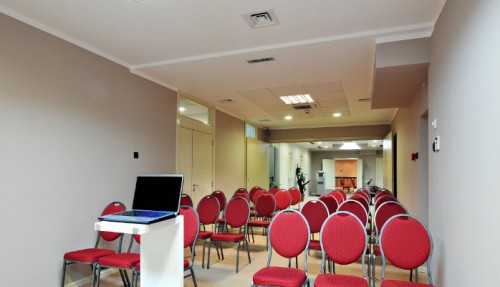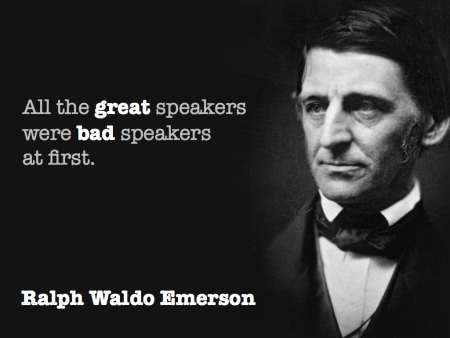How to Build a Better Academic Conference
‘Tis the season, my friends. You get on a plane with your pile of papers to grade or that book you have to prep for class or that sheaf of printed primary docs you need to annotate. You fly to a mid-size city, take a cab to a conference hotel, dump your bags in the room, and go to the registration hall to get a $125 name tag.

You find your way to a windowless room with drab carpet, settle into the most uncomfortable chair ever designed, and listen to three people read at you.
And then another person gets up and reads at you too, sometimes from notes written on airplane napkins. Is it any wonder that at the end of any given conference day, academics find refuge in the hotel bar?
There are many elements of Christy Wampole’s “Conference Manifesto” that made me laugh out loud. But it was a sad laugh. Because we shouldn’t have almost empty conference rooms, comments-as-questions, or 30-minute papers jammed into 20 minutes.
Like many of my colleagues, I don’t agree with Wampole that conferences as we currently experience them constitute the death of the humanities. Conferences are significant intellectual and social events that can show why our work matters. I want to hear about new research in fields that are either mine or are new to me. I want to see my colleagues from other institutions, and have invigorating conversations about the state of our field. I want everyone there to treat everyone else with respect. And I want not to be bored out of my mind.
First things first: we need to stop reading at each other.
Talk the Talk

Somehow we have been conditioned to think of these conference presentations as “papers” rather than “talks.”
This leads many people to write their talks like academic articles, with complex-compound sentences, long paragraphs of exposition, theoretical terms, and long chunks of text from primary documents. And then they feel like they have to read them at us, because what else is there to do?
How could you memorize an article, in the time you have available between teaching, advising, and other responsibilities you have in your life? You can’t.
Instead of writing an article, write a talk.
Ostensibly, academics who teach do this kind of writing already. Whatever your opinion about the utility of lectures as a teaching and learning tool, when done well, a lecture can be great. The effective lecturer does not read at her students. Instead, she conveys an argument in a structured form, cites pithy quotes, and paces around, waving her arms a lot.
Perhaps there is a power point – although if so, the effective lecturer will only have 5-7 slides, with very few words and only one image per slide. And she will keep it short and snappy, coming in well under the allotted time limit.
If you’ve never done this before, don’t worry. We all need practice to become better talkers. And EVERYONE SHOULD PRACTICE.

To compose a talk, write short paragraphs, or even bullet points.
Write it like you’re talking, with pauses for asides. Ask questions. Make use of repeated words or phrases at the beginning of sentences. These writing strategies will help you talk the talk.
If all panelists talk the talk, the standard 3+1 panels will improve immensely.
But what about moving beyond the 3+1?
Are there other ways to convey our research, in formats that are more conducive to provoking dynamic conversations? Because let me tell you, they rarely happen at a standard 3+1 academic panel. Even if the presenters stick to the time limit (and somehow manage not to comment on this, like – “Oh no! Two minutes! Okay … um … I’ll skip this and um …”) and the commentator has some interesting things to say, this usually leaves only 10 minutes or so to have a conversation among the panelists or with the audience members.
So what is there to do? Here are some ideas.
3 minus 1
If we must stick with the 3 paper format, let’s at least ditch the commentator. Let the chair preside over the session and moderate the discussion. Give the commentator’s time over to the audience to ask questions and formulate critiques.
The Pre-Circulated Paper Panel
This format already appears on some conference schedules. Attendees sign up for the panel ahead of time, receive papers, read them, and then come to the panel fully prepared for discussion.
This structure is great in concept. I have participated in several smaller conferences with 5 to 10 scholars using this format, and it was really successful, generating a lot of conversations (not to mention, edited collections).
But in the midst of a larger conference, where this format is not the norm, it’s unclear if these kinds of panels draw larger audiences. Or if they create the conditions for a more invigorating discussion than the regular ol’ 3+1.
And for many academics who might lean toward procrastination, this is a non-starter. Unlike many students, academics usually won’t attend a panel like this if they haven’t done the reading.
The Roundtable
This type of panel, which brings together a larger group of scholars to talk a bit more informally for only 5-7 minutes (MAXIMUM), is increasingly popular and can be very engaging.
I have seen roundtables that focus on a single book, a larger theoretical question, “key terms,” or the “state of the field.” This last a perennial favorite, because every audience member hopes her/his work will be mentioned.
A good roundtable depends on a mutual agreement between participants that they will not go over their time, they will not read at the audience, and they will actually talk to one another in the course of the discussion period. A good roundtable also needs a strong moderator.
The Lightning Roundtable
7-10 people, 3 minutes each. No commentator, just questions from the audience in the abundant time left over in the session.
I’ve participated in these types of roundtables, and they are great fun. It works well for a group of people who are contributing to an edited volume, or a journal special issue. Audience members can get a good sense of each person’s topic and argument in those three minutes. For this kind of session to be successful, the moderator has to be VERY strict about time limits.
Then use the abundant time left in the Q&A for an actual conversation that ties these presentations together.
The New Yorker Festival
No prepared statements, just an actual conversation! Between 3-4 scholars, guided by an “interviewer”‘s insightful, learned questions.
The success of this format rests on a very talented moderator, someone agile enough to respond to unexpected answers, to fend off anyone who might tend to grandstand or mansplain, and to transition gracefully to the role of moderator once the audience has the opportunity to ask questions.
*
These are just a few ideas. What other panel formats have you seen in action, or have you daydreamed about, as you shift uncomfortably in those conference room chairs?
Consider how easy it would be to enact these changes. We would all still convene at the bar afterward, of course. Not because we’re bored out of our minds — but because we are there to toast one another’s great ideas, well articulated, and vigorously discussed.
This blog post was updated on August 20, 2020.
